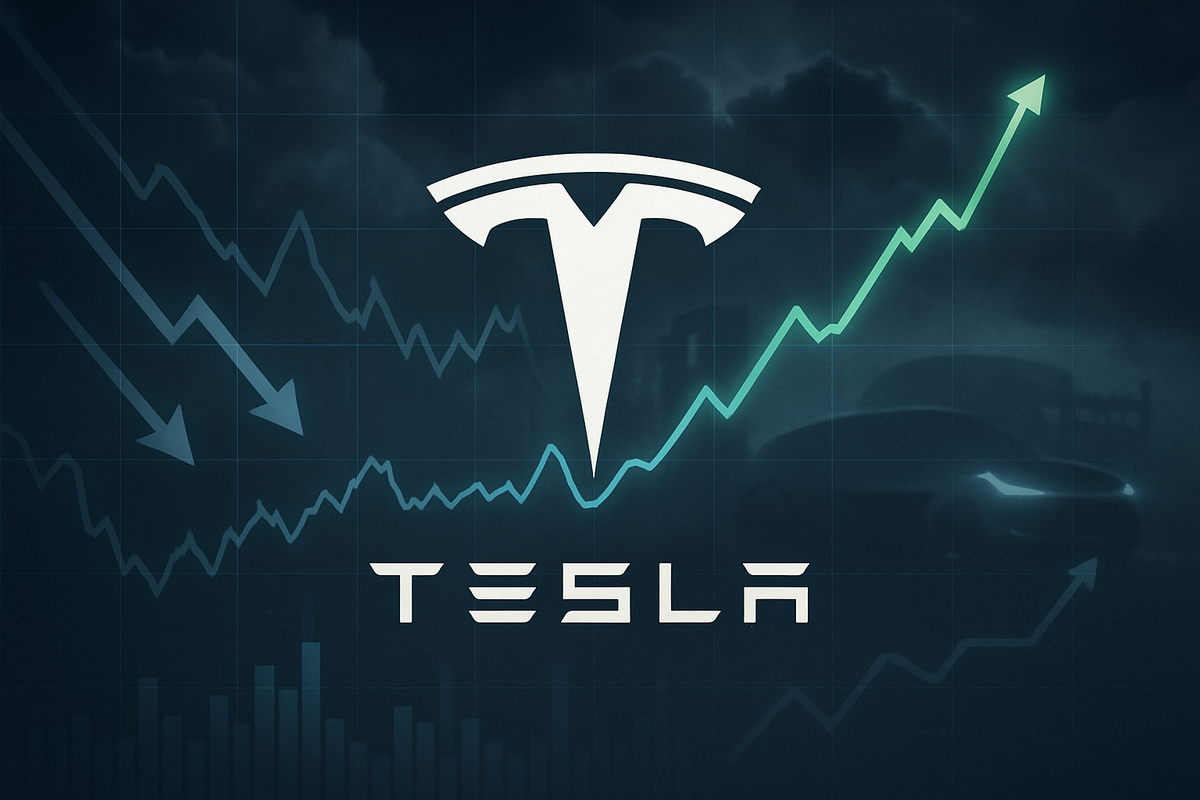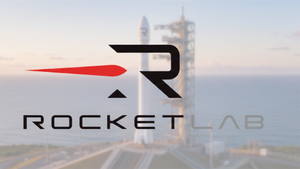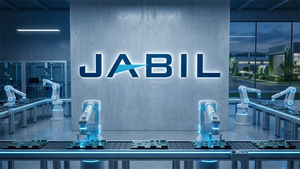
As October 16, 2025, dawns, the financial markets are abuzz with discussions surrounding Tesla (NASDAQ: TSLA), whose stock appears to be nearing a pivotal "buy point" for many investors. The electric vehicle (EV) titan, currently trading around the $434-$435 range, has demonstrated a robust year-to-date performance, nearly doubling in the past 12 months and outperforming the S&P 500. This recent momentum, partly fueled by a stronger-than-expected Q3 vehicle delivery beat of over 490,000 units, has instilled a cautious optimism among some market participants.
However, this potential opportunity is shadowed by prominent warnings of heightened market volatility, a characteristic often associated with October, and the looming Q3 2025 earnings report scheduled for October 22. Analysts and market strategists are sounding alarms about stretched valuations, particularly in the AI sector where Tesla is increasingly positioned, urging prudence and diversification. The upcoming earnings call is poised to be a critical determinant for Tesla's near-term trajectory, with significant stock movement anticipated post-announcement.
Tesla's Technical Horizon: Navigating Buy Signals and Valuation Debates
Tesla's stock is currently consolidating between a technical support level of $400 and a resistance level of $480, with immediate resistance identified around the $450-$460 mark. Its position above the 20- and 50-day moving averages suggests a short-term bullish trend remains intact. This technical posture, combined with recent delivery successes and Elon Musk's renewed focus on the company, including a reported $1 billion stock purchase, has led some analysts, such as those from Melius Research and Stifel, to issue "Buy" ratings with price targets reaching up to $520. These bullish sentiments often hinge on Tesla's perceived dominance in automotive technology and its burgeoning role in artificial intelligence and robotics.
The timeline leading to this moment has seen Tesla (NASDAQ: TSLA) recover significantly from earlier concerns. The Q3 2025 delivery beat, surpassing 490,000 units, played a crucial role in mitigating previous margin anxieties and bolstering investor confidence. However, this optimism is far from universal. Many analysts maintain a "Hold" consensus, with an average target price significantly below current trading levels, around $361-$364. Firms like Morningstar deem the stock "significantly overvalued" with a fair value estimate of $250, advocating for a waiting period before investment. BNP Paribas Exane even initiated coverage with an "Underperform" rating and a $307 price target, citing concerns over its high P/E ratio of 250.71 and potentially "overly optimistic" market expectations for its Robotaxi product.
Key players in this unfolding narrative include a diverse array of stakeholders. Institutional investors are weighing Tesla's long-term growth potential against its elevated valuation. Retail investors, often captivated by Tesla's innovative narrative and Elon Musk's persona, contribute significantly to its trading volume. Analysts from various financial institutions act as crucial arbiters, providing guidance that shapes market sentiment. Initial market reactions have been a blend of cautious buying, driven by positive delivery news, and profit-taking by those wary of the upcoming earnings and broader market risks. The stock's increasing correlation with the AI sector means its movements are scrutinized not just within the automotive industry but across the technology landscape.
The broader market environment is also contributing to the current tension. Goldman Sachs (NYSE: GS) recently warned that October is historically a month of higher global equity volatility, often driven by corporate earnings pressure, year-end performance benchmarking, and macroeconomic events. The Cboe Volatility Index (VIX), a key gauge of market fear, spiked earlier in October, signaling persistent caution among investors. This backdrop amplifies the scrutiny on high-valuation stocks like Tesla (NASDAQ: TSLA), making its impending earnings report an even more critical event.
Ripple Effects: Tesla's Trajectory and the EV Ecosystem
The immediate and most significant beneficiary or casualty of Tesla's (NASDAQ: TSLA) upcoming earnings report and market perception will undoubtedly be Tesla itself. A strong earnings report, particularly one that addresses margin concerns and provides clear, positive updates on its autonomous driving initiatives (such as Robotaxi and Full Self-Driving progress) and the ramp-up of lower-priced Model Y and Model 3 versions, could propel the stock past current resistance levels. Conversely, any disappointment in earnings, a cautious outlook, or further margin compression could trigger a significant sell-off, validating the concerns of those who view the stock as overvalued. Tesla's ability to demonstrate tangible progress in its AI and robotics ventures, which currently contribute no revenue but heavily influence its valuation, will also be crucial.
Beyond Tesla, its direct competitors in the electric vehicle market stand to gain or lose depending on the outcome. Established automakers like Ford (NYSE: F) and General Motors (NYSE: GM), which are heavily investing in their own EV lineups, could see increased investor interest if Tesla falters, as capital might flow into more "traditional" automotive plays. Conversely, if Tesla (NASDAQ: TSLA) continues its strong growth trajectory and executes flawlessly on its new product lines, it could intensify competitive pressure, forcing these legacy automakers to accelerate their EV strategies and potentially impacting their profit margins. Emerging EV players such as Rivian (NASDAQ: RIVN) and Lucid Group (NASDAQ: LCID) are also sensitive to Tesla's performance. A strong Tesla could validate the overall EV market, potentially benefiting these smaller players, but it could also overshadow them, making it harder to attract capital and market share.
The wider EV supply chain also faces potential impacts. Companies involved in battery manufacturing (e.g., Panasonic (TYO: 6752), LG Energy Solution (KRX: 373220)), semiconductor production (e.g., Nvidia (NASDAQ: NVDA) for AI chips), and raw material extraction could experience shifts in demand and investor sentiment. A robust Tesla performance could signal sustained high demand for EV components, benefiting suppliers. Conversely, a downturn could lead to order reductions or pricing pressure, affecting their financial outlooks. Tesla's focus on cost efficiencies and vertical integration also means that its success or struggles can directly influence the business models and profitability of its various suppliers and partners across the globe.
Beyond the Stock Price: Tesla's Influence on Industry Trends and Market Dynamics
Tesla's (NASDAQ: TSLA) current stock situation is more than just a company-specific event; it's a significant barometer for broader industry trends, particularly within the electric vehicle and advanced technology sectors. The debate over its valuation, often tied to its future potential in autonomous driving and AI, reflects a wider market trend of assigning premium valuations to companies perceived as leaders in transformative technologies. How Tesla navigates its upcoming earnings and the associated volatility will provide crucial insights into investor appetite for high-growth, high-P/E stocks in a potentially more cautious economic environment. Its ability to scale production of new, lower-priced models will also be a key indicator for the mass-market adoption trajectory of EVs globally.
The ripple effects of Tesla's performance extend to its competitors and partners. A strong showing could further solidify its market leadership, compelling rivals to innovate faster and more aggressively in areas like battery technology, charging infrastructure, and software. This could lead to an acceleration of EV development across the industry. Conversely, if Tesla (NASDAQ: TSLA) stumbles, it might temper investor enthusiasm for the entire EV sector, potentially making it harder for other EV startups to raise capital or for legacy automakers to justify their massive investments in electrification. Furthermore, Tesla's influence on charging standards and battery technology development means its strategic decisions have broad implications for the entire EV ecosystem.
Regulatory and policy implications are also at play. Tesla's (NASDAQ: TSLA) continued push for autonomous driving and Robotaxi services will inevitably draw more scrutiny from regulators worldwide. Any advancements or setbacks reported in its earnings call could influence the pace of regulatory approvals and the development of legal frameworks for autonomous vehicles. Moreover, government incentives for EV adoption and charging infrastructure, which have significantly benefited Tesla and the broader industry, remain a critical backdrop. Shifts in these policies, or Tesla's ability to operate profitably without them, will shape the future landscape.
Historically, periods of high growth and intense market speculation around disruptive technologies have often been followed by periods of consolidation or increased volatility. Comparisons can be drawn to the dot-com bubble of the late 1990s, where companies with immense future potential but limited current profitability saw their valuations soar. While the underlying technology and market conditions are different, the principle of balancing future promise with current fundamentals remains a key challenge for investors in companies like Tesla (NASDAQ: TSLA). The upcoming earnings report will test whether Tesla can continue to justify its premium valuation in the face of increasing competition and macroeconomic headwinds.
The Road Ahead: Navigating Earnings, Volatility, and Strategic Shifts
In the short term, the immediate focus for Tesla (NASDAQ: TSLA) and its investors will be the Q3 2025 earnings report on October 22. Analysts are bracing for a projected decline in earnings per share (EPS) to around $0.40-$0.43, down from $0.62 in the same quarter last year, despite an expected revenue of approximately $26.499 billion. The market's reaction will hinge not just on these headline numbers but crucially on management's commentary regarding future guidance, particularly on production targets, margin trends, and updates on high-growth ventures like Robotaxi and FSD. The options market is already pricing in a significant post-earnings stock move of over 6.78%, highlighting the high stakes involved.
Looking further out, the long-term possibilities for Tesla (NASDAQ: TSLA) are vast but contingent on several factors. Continued execution on cost reduction, successful ramp-up of new models, and tangible progress in autonomous driving and AI will be paramount. The company's ability to maintain its technological edge against rapidly advancing competitors, both legacy automakers and new EV entrants, will define its market share and profitability. The success of future product platforms, such as the Cybercab and the Optimus robot, currently generating no revenue, will also be critical in justifying its long-term valuation as an AI and robotics powerhouse, not just an automotive company.
Market volatility, a persistent theme in October 2025, is expected to continue. Investors will need to monitor macroeconomic indicators, interest rate policies, and geopolitical developments, all of which can influence overall market sentiment and, by extension, Tesla's (NASDAQ: TSLA) stock performance. Any signs of a broader economic slowdown could amplify pressure on consumer discretionary spending, impacting EV sales. Tesla may need to consider strategic pivots, such as adjusting pricing strategies, optimizing production across its global gigafactories, or accelerating software monetization efforts, to adapt to evolving market conditions and competitive landscapes.
Emerging market opportunities could arise from increased demand for energy storage solutions (Tesla Energy) and the broader adoption of AI technologies. Challenges include managing supply chain disruptions, navigating complex regulatory environments for autonomous vehicles, and fending off fierce competition. Potential scenarios range from a continued bullish run if earnings exceed expectations and future guidance is strong, to a significant correction if the company fails to meet investor expectations or if broader market volatility intensifies.
Conclusion: A High-Stakes Quarter for Tesla and the EV Market
Tesla (NASDAQ: TSLA) stands at a critical juncture, with its stock price flirting with a potential "buy point" while simultaneously facing stern warnings of market volatility and the impending scrutiny of its Q3 2025 earnings report. The key takeaway is a delicate balance between optimistic growth projections driven by innovation in EVs, AI, and robotics, and the pragmatic concerns over high valuation, competitive pressures, and macroeconomic uncertainties. The company's recent strong delivery numbers offer a glimmer of optimism, but the market's focus will now shift to profitability, margin performance, and forward-looking guidance, particularly concerning its ambitious autonomous driving and new product initiatives.
Moving forward, the market will assess Tesla (NASDAQ: TSLA) not just on its automotive performance but increasingly on its capabilities as a technology and AI leader. The outcome of the Q3 earnings call on October 22, 2025, will be a pivotal moment, potentially setting the tone for the stock's trajectory through the end of the year and beyond. Its ability to demonstrate tangible progress in its Robotaxi and FSD programs, alongside efficient production of its core EV models, will be crucial in justifying its premium valuation.
For investors, the coming months demand a vigilant approach. Beyond Tesla's (NASDAQ: TSLA) specific earnings, it's imperative to monitor broader market volatility indicators, interest rate movements, and geopolitical developments that can influence investor sentiment. Attention should also be paid to the competitive landscape, particularly how legacy automakers like Ford (NYSE: F) and General Motors (NYSE: GM), and emerging players like Rivian (NASDAQ: RIVN) and Lucid Group (NASDAQ: LCID), respond to Tesla's strategies. Furthermore, any regulatory shifts concerning autonomous vehicles or EV incentives could significantly impact the entire sector. This high-stakes quarter for Tesla will offer invaluable insights into the future direction of the EV industry and the broader technology market.
This content is intended for informational purposes only and is not financial advice




